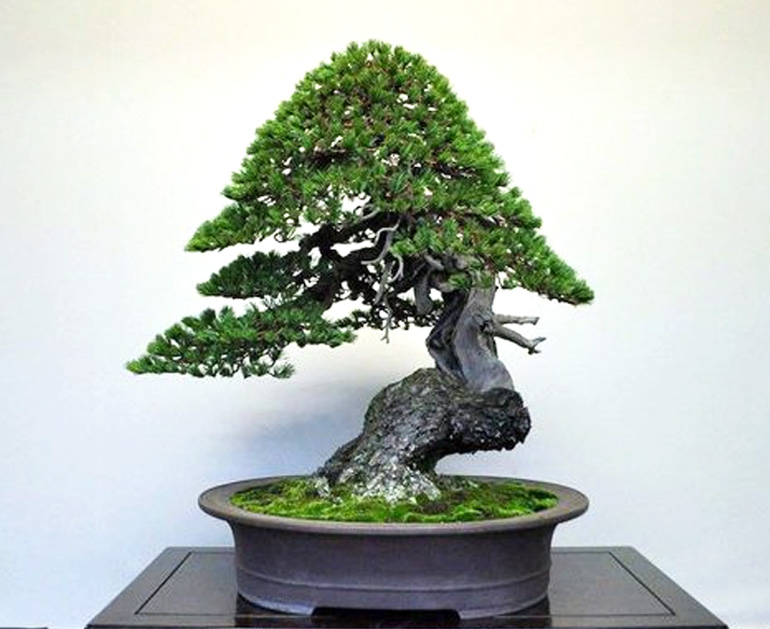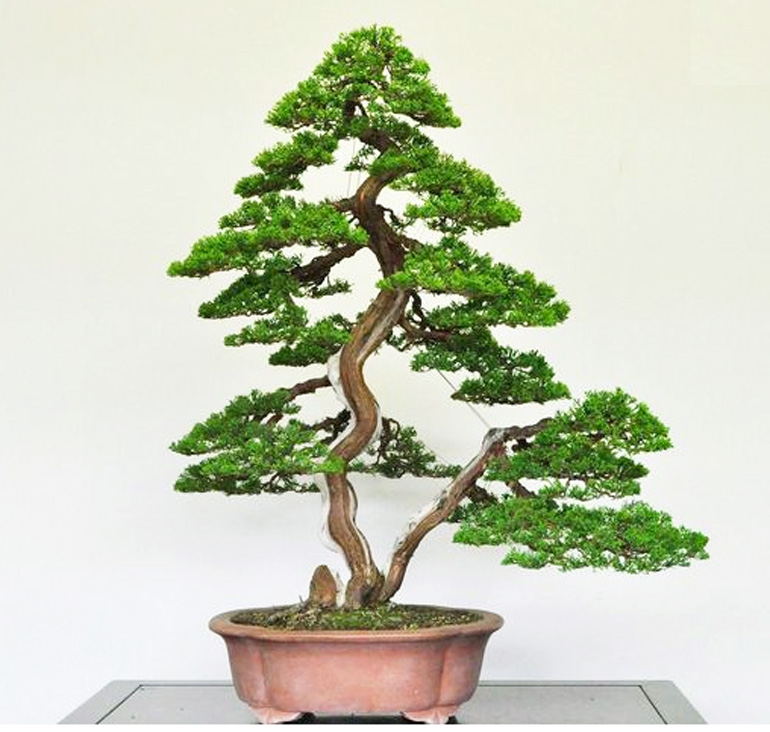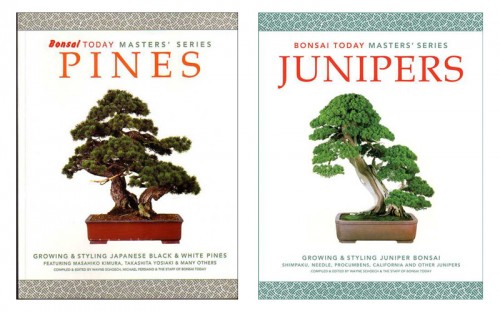
Sheer power. This impressive Japanese white pine was styled by Naoki Maeoka. In his own words: Every single branch of each tree was looked at carefully, and strong branches were cut, while leaving the soft ones to balance the foliage. Then I detail wired the entire tree to put the remaining branches in an ideal position. Trees were simply wired in these positions for the time being. It's not the final goal of styling. It's a new beginning towards achieving that eventual goal.
The two trees shown here couldn’t be that different in terms of styles and effects. The Japanese white pine above with its heavy trunk and dense crown is all about power and solidity, while the Shimpaku juniper below is light, airy and graceful.
What the two trees shown here share is the hand and eye of Naoki Maeoka, a highly accomplished young Japanese bonsai artist. I mention his youth because there has been concern that young people weren’t taking up bonsai. Especially in Japan, but also in the West. This may still be true to some extent in Japan, but less soin the West, with a whole new generation cropping up (led by apprentices returning from Japan). Just in time!
This isn’t the first time and won’t be the last. We’ve featured Naoki Maeoka and his remarkable bonsai several times here on Bark. Both of the photos shown here are from Bonsai Empire, via Pinterest.

Elegance. You don't usually see trees quite like this in nature, with that series of small S-curves working their way up the trunk (a mark of bonsai styling). Still, it's a beautiful bonsai, tall, graceful and perfectly balanced. And it has a couple features that give a little extra character: the small second trunk (held in place by a guy wire) and that knee sticking up next to the main trunk. The tree is a Shimpaku juniper.
30% off Bonsai Book Sale
 The two trees featured in this post are a Pine and a Juniper
The two trees featured in this post are a Pine and a Juniper
as are the trees featured in these two Masters Series Bonsai Books
Now 30% off our already discounted prices
along with all the rest of our large selection of Bonsai Books